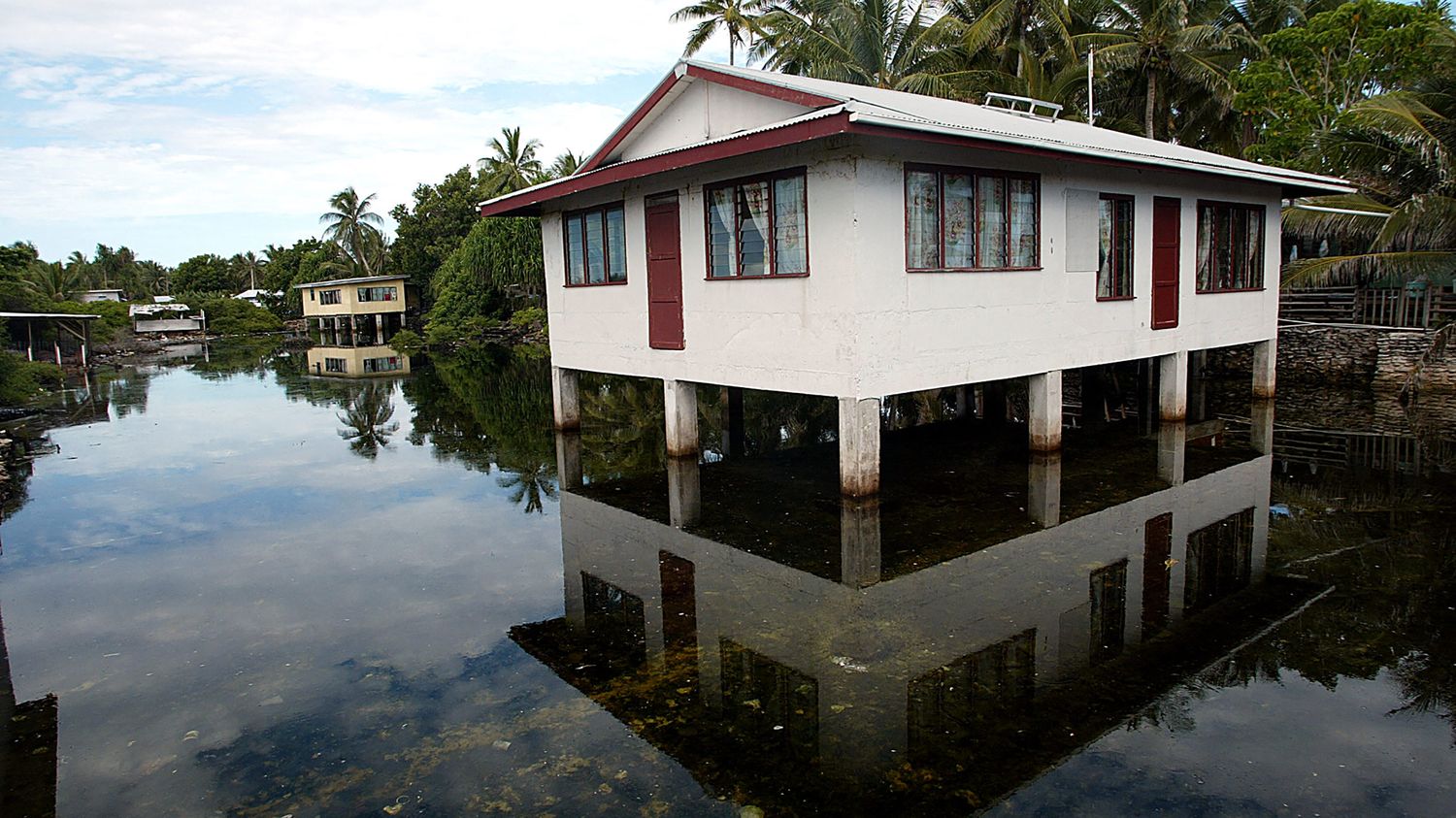It is one of the countries most threatened by rising sea levels due to global warming. Faced with this threat, its Australian neighbor offers asylum to the 11,000 inhabitants of the archipelago.
Threatened with having to leave their islands because of rising waters, the inhabitants of Tuvalu will be able to find refuge in Australia. Canberra has announced that it is offering “climate asylum” to the population of this Pacific archipelago, which has been facing the inexorable rise in ocean levels for decades. Tuvaluans will now benefit from “special rights” to settle and work on the island continent, according to a treaty made public by the two countries on Friday November 10. The text must still be ratified by both parties to enter into force.
1 Why is this small Pacific country threatened?
The state of Tuvalu is the fourth smallest country on the planet with an archipelago covering a land area of 26 km2. The nine atolls that make it up only emerge one or two meters above the ocean. The highest point of the territory is located just five meters above sea level.
Today, the small group of islands is threatened by rising water levels as a result of global warming. In recent years, the country has been shrinking, eaten away by the ocean. This phenomenon increases the frequency of flooding, coastal erosion and soil salinization, making all agricultural activity more difficult and complicating the lives of the 11,000 Tuvaluans.
2Will Tuvalu disappear?
The water rises quickly. By 2023, two of the nine coral reefs making up Tuvalu have already been submerged by the Pacific Ocean. Several experts believe that the country could disappear by the end of the century. According to estimates from the latest report of the Intergovernmental Panel on Climate Change (IPCC), the rise in average sea levels will be “pprobably” between 28 cm and 1.01 m by 2100 compared to 1900.
To alert the international community of the imminent disappearance of his archipelago, the Minister of Justice, Communication and Foreign Affairs of Tuvalu, Simon Kofe, did not attend the United Nations conference on climate change, the COP26, organized in November 2021 in Glasgow. Instead, he gave a recorded speech with his feet in the water. “In Tuvalu we are experiencing the reality of climate and sea level rise (…). We cannot wait for speeches while the sea rises around us”he explained.
The Prime Minister of Tuvalu, Kausea Natano, declared at the UN in September 2022 that his country could disappear within 30 to 50 years. “Our islands will cease to exist. This is not a future scenario, this is what we live with now”he stressed.
3 Are there solutions to protect the archipelago?
Faced with rising waters, means are being put forward to try to save Tuvalu. In the agreement presented on Friday, Australia committed to mobilizing 16 million Australian dollars (around 9.5 million euros) to consolidate the coasts and recover land from the sea – at least 6% of the national territory – in order to create housing and “allow people to continue living in Tuvalu despite the rise of the sea”. Australian Prime Minister Anthony Albanese also stressed that developed countries must take more responsibility in the fight against global warming.
Evacuating the archipelago would be the solution of last resort, says the Tuvaluan Prime Minister in the British daily The Guardian. But this possibility is still at the heart of the treaty which offers climate asylum to the citizens of Tuvalu. This system should allow Tuvaluans to take refuge in Australia to “live there, study there and work there”. The number of entries will initially be limited to 280 per year, to avoid a “brain drain” that is too damaging to the small country.
Tuvaluans refugees in Australia will have access to the education and health systems, financial and family assistance, specifies the treaty. This agreement “is the first (…) which specifically addresses climate mobility”underlines Jane McAdam, professor at the University of New South Wales, in Australia.
